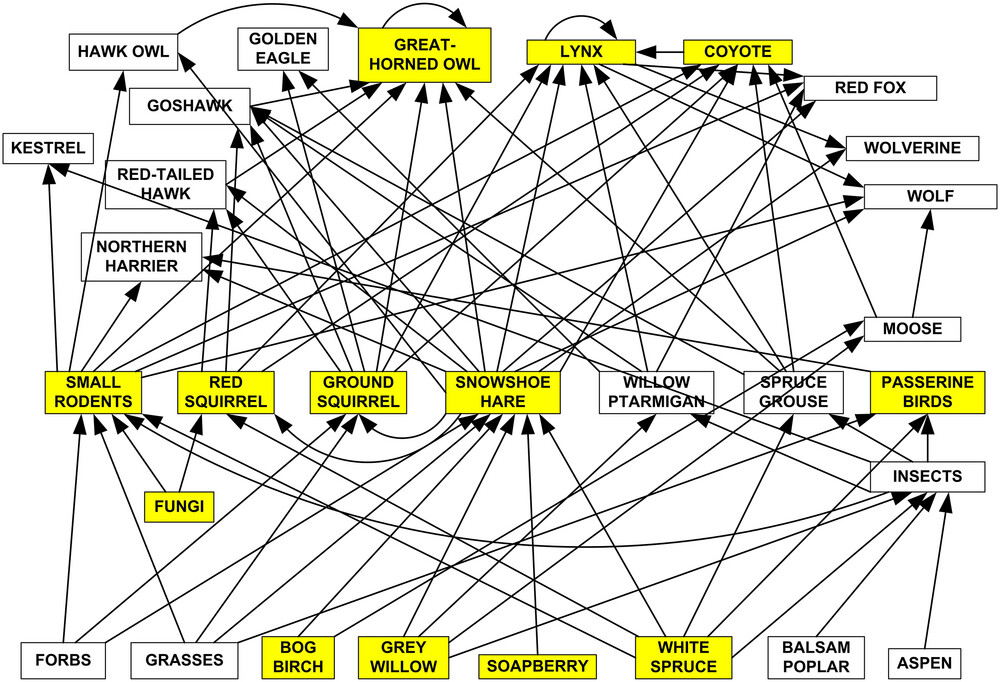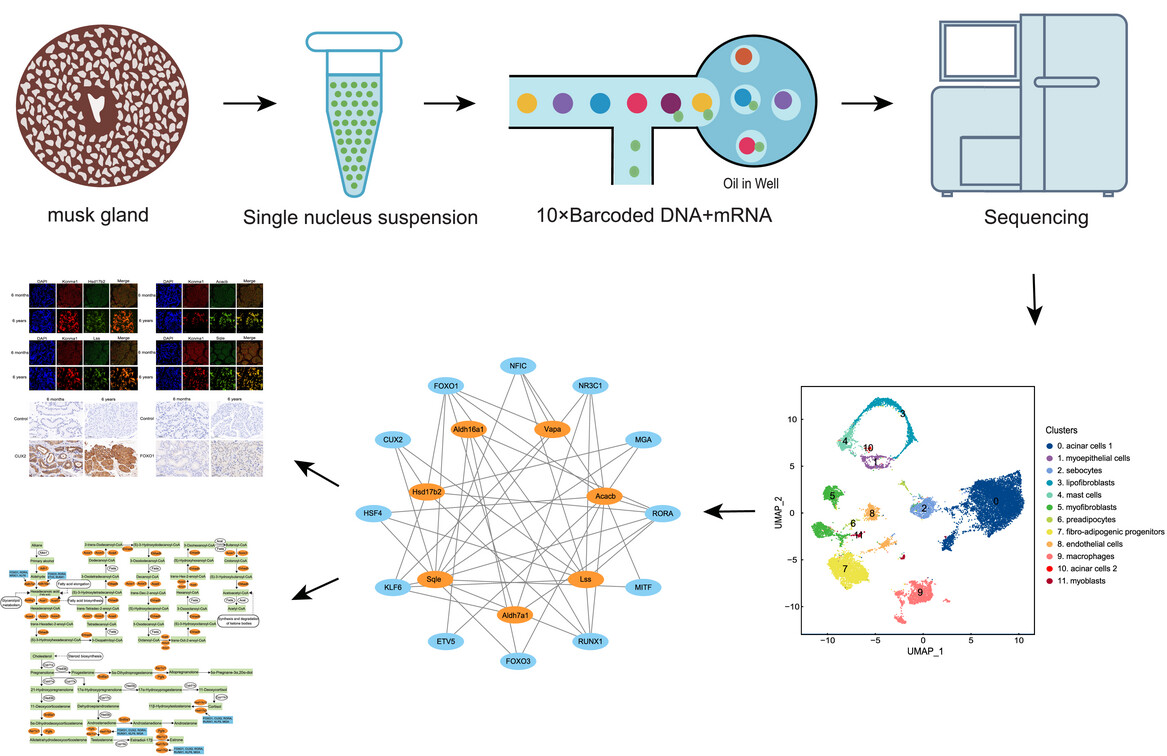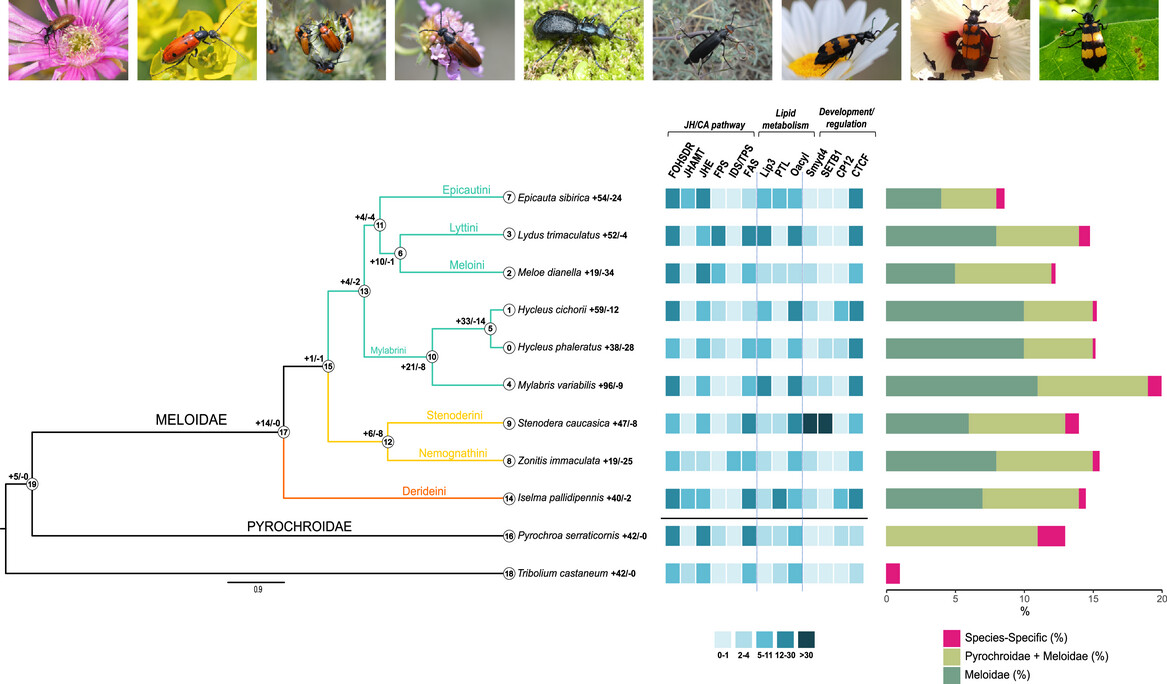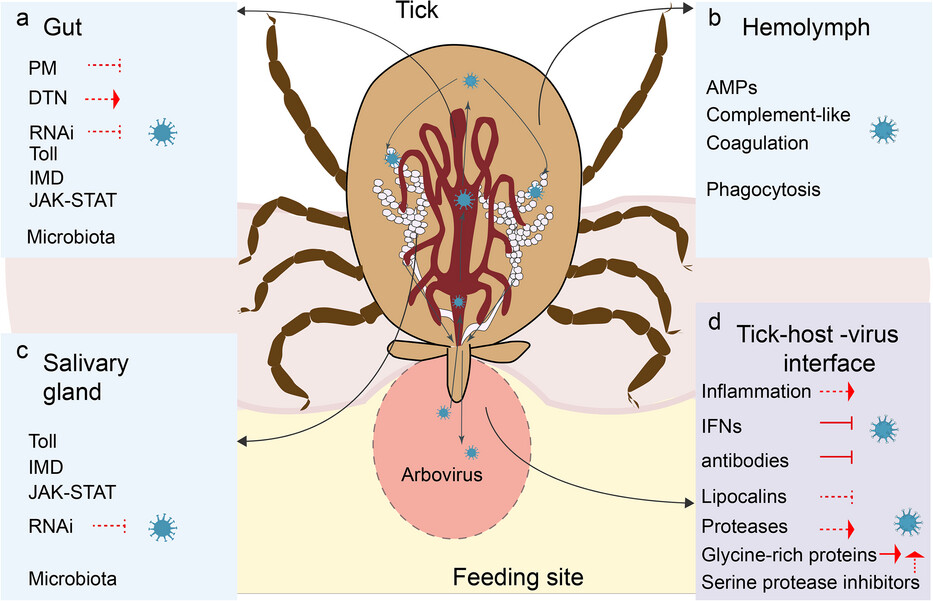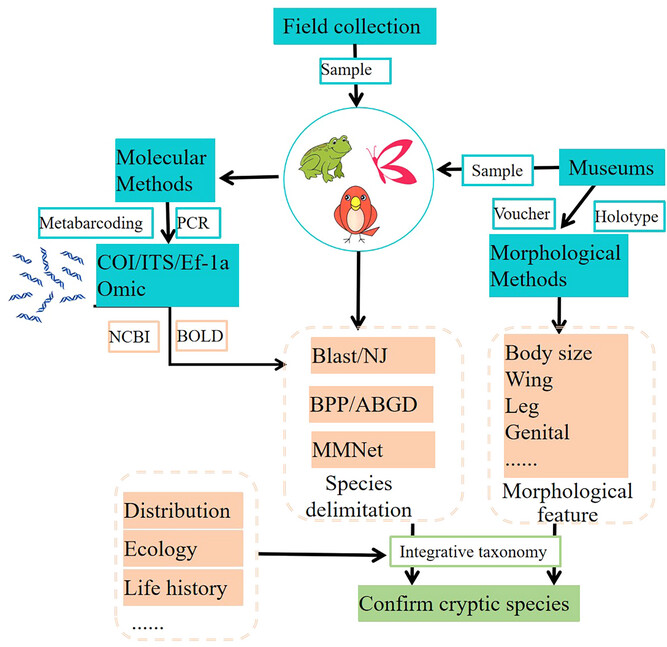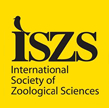Journal list menu
Export Citations
Download PDFs
Table of Contents
Population and community ecology: past progress and future directions
- First Published: 02 July 2024
Validation and development of eDNA metabarcoding primers for comprehensive assessment of Chinese amphibians
- First Published: 10 May 2024
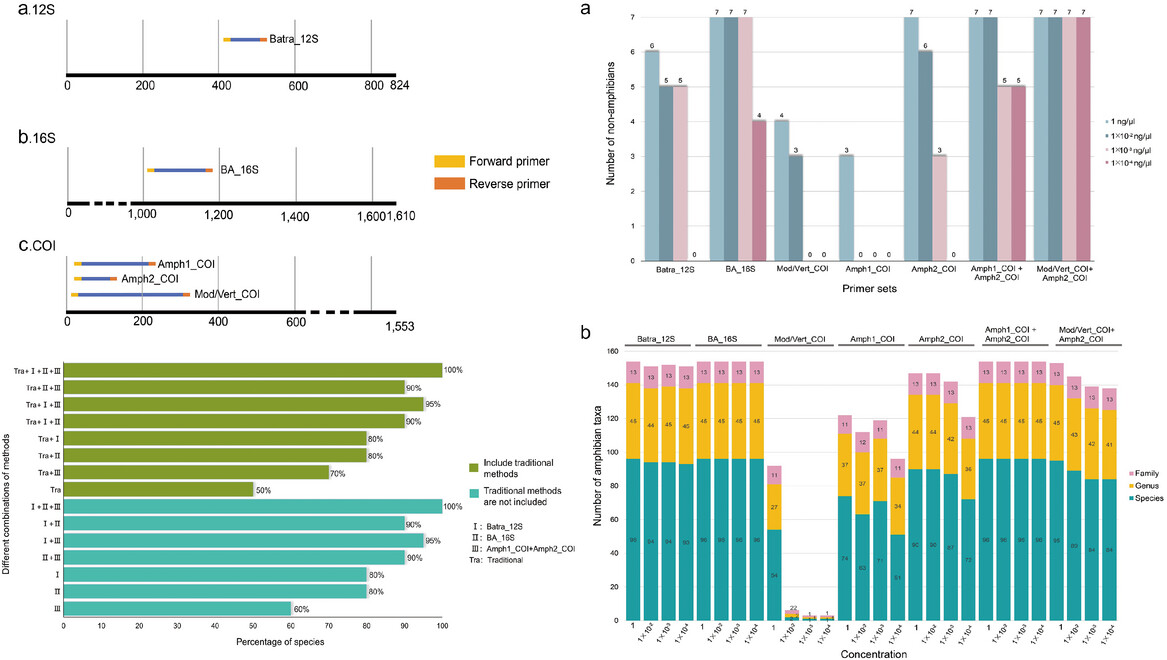
eDNA metabarcoding, using various primer sets, effectively amplified 83 amphibian species from China, showcasing its potential for biodiversity assessments. However, optimizing amphibian-specific primers is crucial due to occasional non-amphibian amplification. Using multiple primer sets is essential for comprehensive surveys, and it also reveals seasonal variations in amphibian species composition, aligning with traditional methods.
Single-nucleus transcriptomics and chromatin accessibility analysis of musk gland development in Chinese forest musk deer (Moschus berezovskii)
- First Published: 21 April 2024
Chromosome-level genome assembly and population genomic analysis provide insights into the genetic diversity and adaption of Schizopygopsis younghusbandi on the Tibetan Plateau
- First Published: 30 September 2024
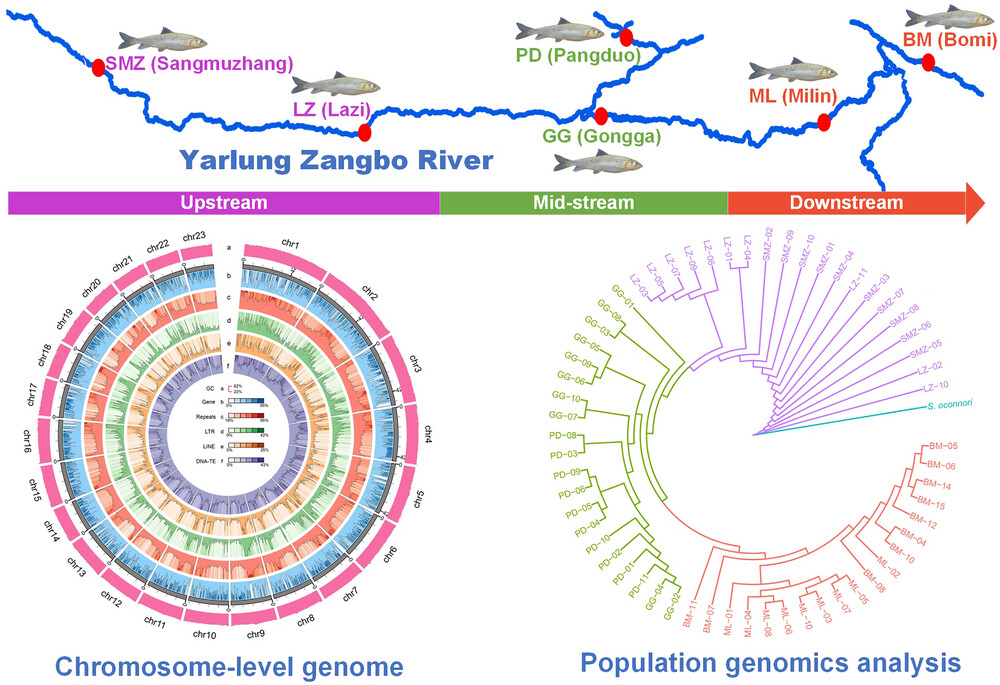
We have constructed the chromosome-scale genome and investigated the evolutionary genomics of Schizopygopsis younghusbandi, a fish species native to the Yarlung Tsangpo River on the Tibetan Plateau. Our study indicated that this species diverged from other Schizothoracine fish approximately 4.2 million years ago, during the Neogene Tibetan uplift. Population studies suggested the species originated upstream and gradually adapted downstream.
Comparative genomics provides insights into molecular adaptation to hypermetamorphosis and cantharidin metabolism in blister beetles (Coleoptera: Meloidae)
- First Published: 15 March 2024
Multi-omics reveal the gut microbiota-mediated severe foraging environment adaption of small wild ruminants in the Three-River-Source National Park, China
- First Published: 02 May 2024
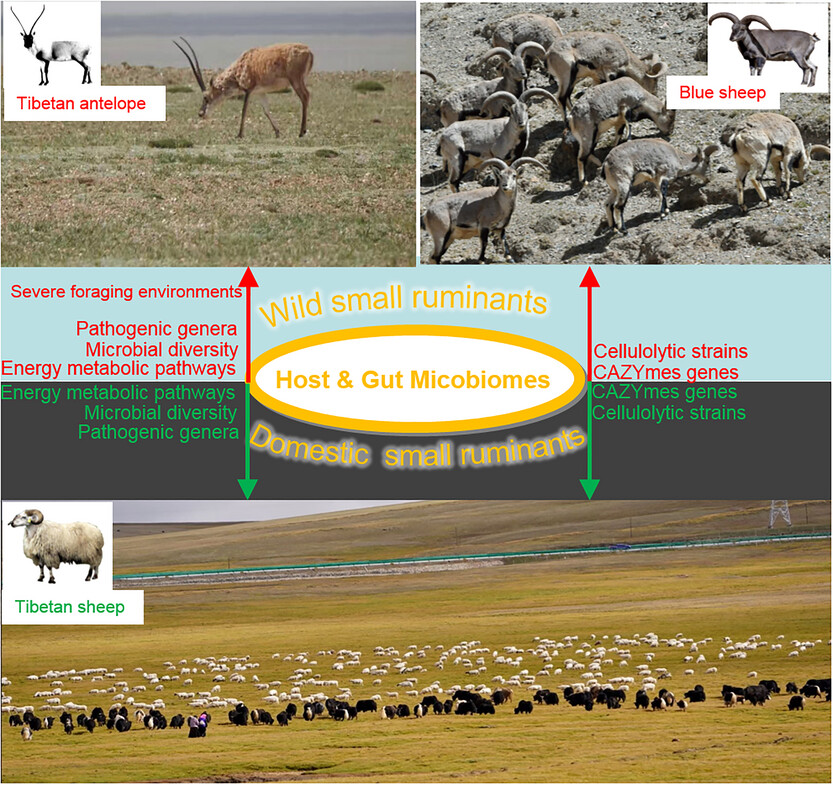
This research reveals the gut microbiota-mediated severe foraging environment adaptation of wild small ruminants in the Three-River-Source National Park. Unlike Tibetan sheep (TS), blue sheep (PN and Tibetan antelope (TA) often grazed low-quality herbage in a wildness environment, and the higher microbial diversity and resilient network characteristics enabled the hosts to cope with flexible feeding environments. Environmental heterogeneity made the gut microbiota of PN and TA exhibit convergent evolutionary characteristics to adapt to nutritional stress from the habitats. Moreover, a study on microbial enterotypes revealed the two enterotypes, especially E1 exhibited by PN and TA, exhibit higher forage utilization potential and typical microorganisms involved in fatty acid and oxidative phosphorylation pathways play vital roles in energy production and maintaining the hosts’ energy balance in the face of cold, anoxia, and food scarcity situation. Furthermore, the less abundant the microbial pathogens, the more abundant the forage-degrading microbiota, and the CAZymes genes encoding cellulose and hemicellulase enable wild small ruminants to better adapt to low quantity and poor-quality forage environments.
Unlocking agro-ecosystem sustainability: exploring the bottom-up effects of microbes, plants, and insect herbivores
- First Published: 26 October 2024
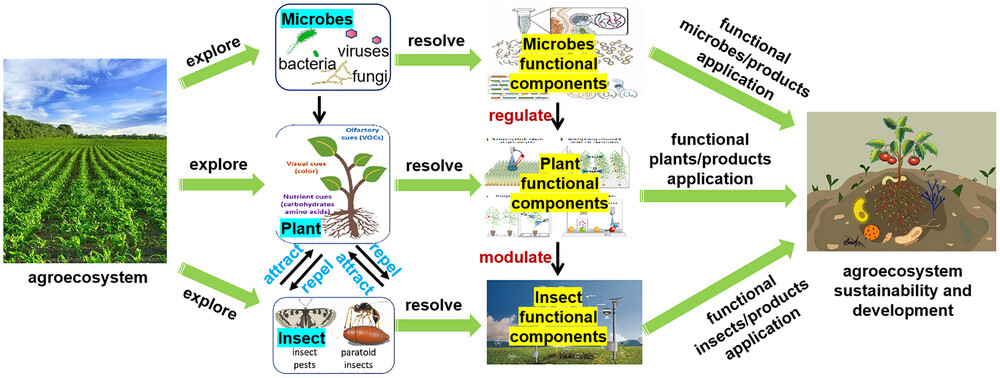
Microorganism-released metabolites, proteins, or toxins modulate plant-based targets to regulate physiological processes such as phytohormone and nutrition balance and stress resistance. Microbes that affect plant physiological processes regulate the visual, olfactory, and gustatory cues associated with plants to attract or repel insect herbivores and/or their natural enemies. A fundamental understanding of such three-way (bottom-up) interaction mechanisms could yield new approaches and products for improving agricultural productivity and ecosystem restoration.
Potential mechanisms implied in tick infection by arboviruses and their transmission to vertebrate hosts
- First Published: 17 July 2024
A newly discovered Hystrix primigenia specimen from the Kemiklitepe collection at Ege University Natural History Museum: insights into paleobiogeography in Eurasia
- First Published: 03 April 2024
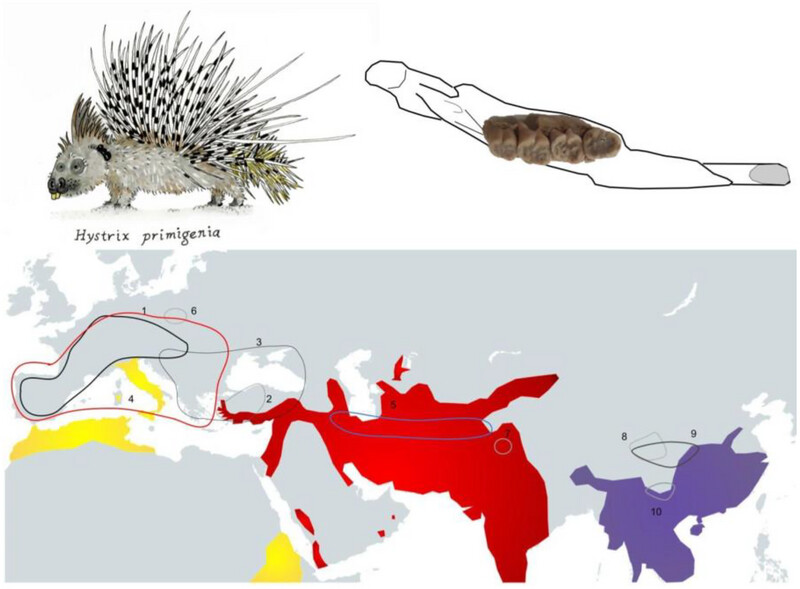
Our paleobiogeographical analysis reveals the absence of Hystrix depereti in Late Miocene Türkiye, parallel with the broader dispersal range of Hystrix primigenia in Eurasia. Examining H. primigenia and H. depereti findings in Eurasia, our study refines Late Miocene Hystrix discoveries in Turkey to two species: H. primigenia and H. kayae, with rare remains found at Kemiklitepe, Uşak, Türkiye, consisting of a hemimandible with a complete series of lower teeth, discovered by researchers from the Ege University Natural History Museum in the 1990s.
Seasonal remodeling of visceral organs in the invasive desert gecko Tarentola annularis
- First Published: 13 February 2024
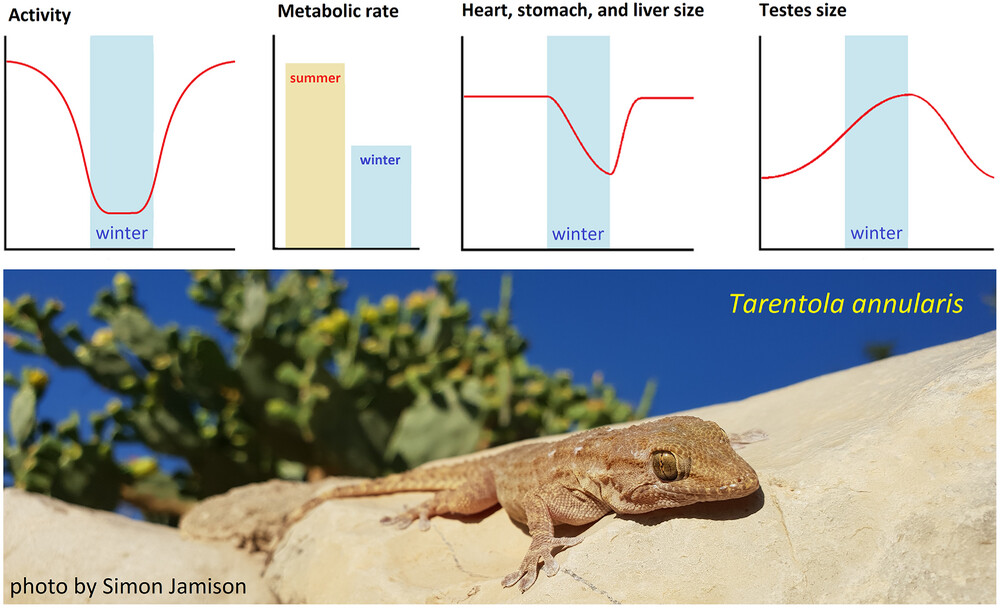
The invasive desert gecko of Tarentola annularis is inactive throughout winter and thus has no energetic intake. During that period, metabolic rates are reduced to almost half, which might be explained by the size of energetically costly organs (heart, stomach, liver) which shrink by 25–69%. However, the testes double in size in winter, enabling reproduction upon return to activity.
Allometric Constraint Predominates Over the Acoustic Adaptation Hypothesis in a Radiation of Neotropical Treefrogs
- First Published: 10 December 2024
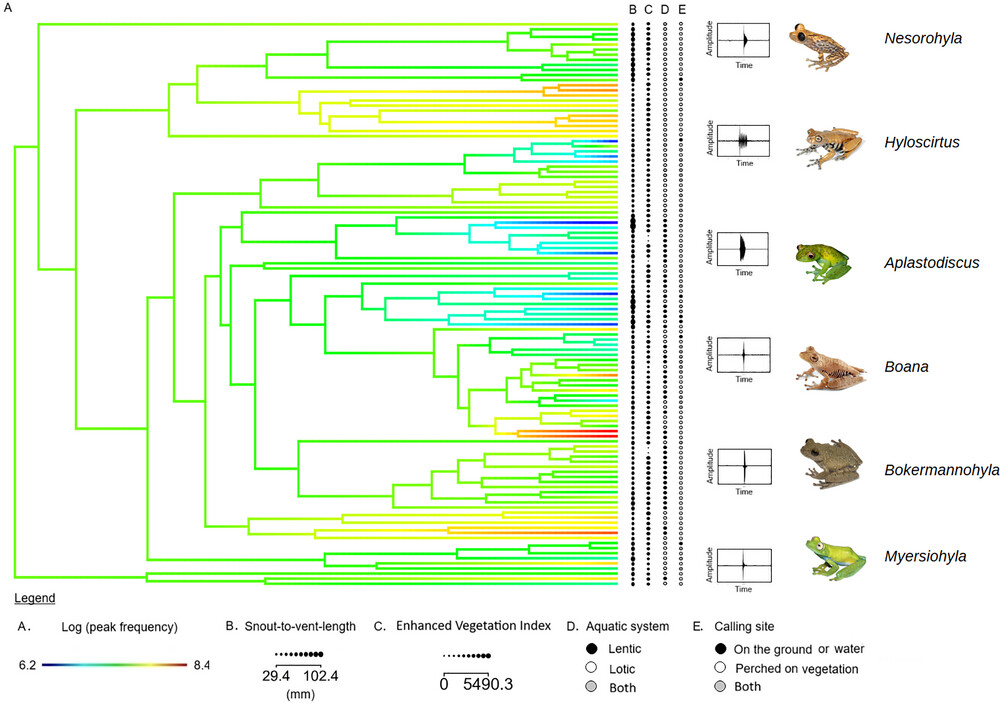
Male frogs emit calls to attract mates and deter conspecific rivals. The evolution of these calls is thought to be linked to anatomical constraints and the acoustic characteristics of their surroundings. We tested these two factors in a radiation of 112 species of Neotropical treefrogs and found that body size and calling site affect peak frequency but no support for associations among call traits and environmental characteristics.
Assessing the role of habitat, climate, and anthropization gradients on terrestrial mammal diversity in the western Mediterranean basin
- First Published: 14 July 2024
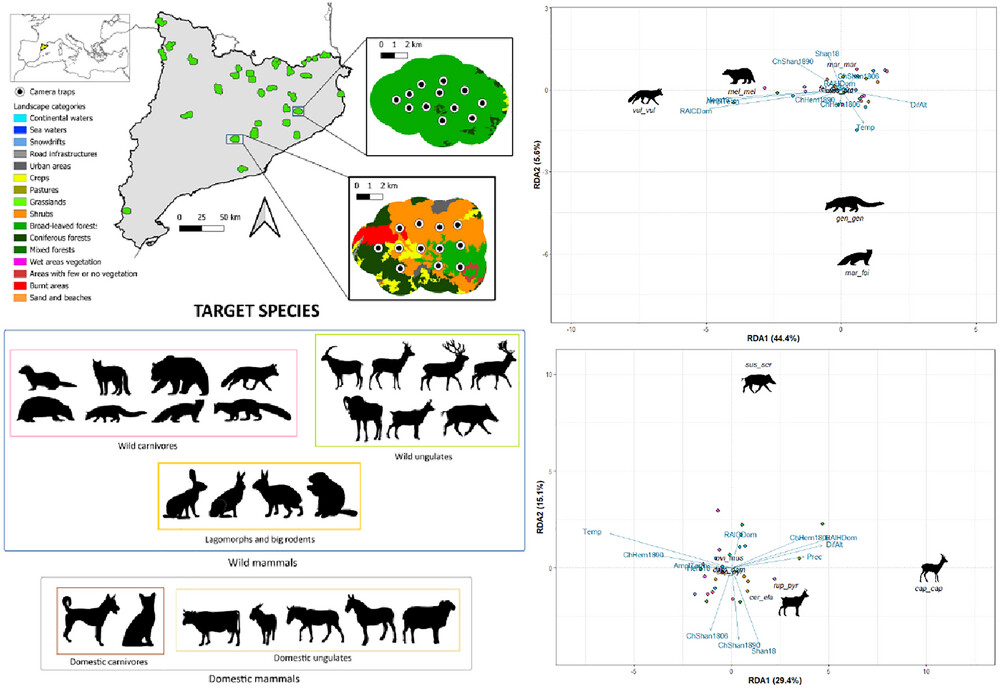
This study investigates the impact of landscape features and human influence on terrestrial mammal diversity in the Mediterranean basin using 300 camera traps across 28 sites. Contrary to expectations, landscape heterogeneity and anthropization did not correlate with mammal diversity. Instead, elevation differences, domestic carnivore abundance, rainfall, and mean elevation emerged as key factors, emphasizing climate change as a major threat to mammal populations in the region.
Cryptic diversity begets challenges and opportunities in biodiversity research
- First Published: 23 January 2024
Identifying habitat modification by Chinese pangolin in subtropical forests of southern China
- First Published: 23 July 2024
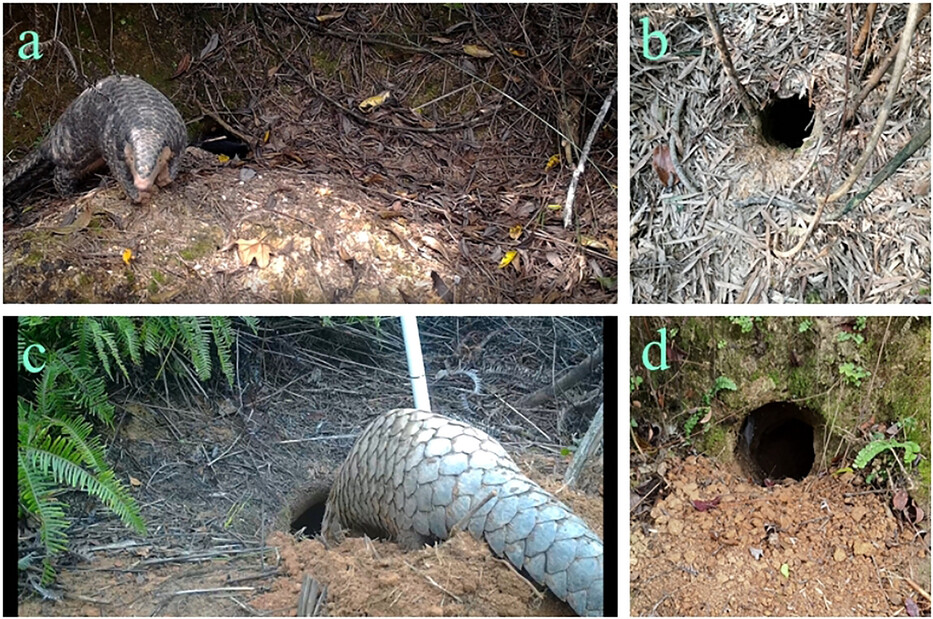
In this study, we identified the critical role of Chinese pangolin in altering habitat heterogeneity, by quantifying habitat subsurface space and surface bare patches increased by pangolin burrows. We thus suggested that pangolins may profoundly affect vegetation renewal and animal distribution in forest ecosystems. Measurements like acceleration rejuvenation and conservation reintroduction of the pangolins may cascade to the recovery of habitat quality and even communities.
DNA metabarcoding diet analysis in a generalist omnivore: feeding trials reveal the efficacy of extraction kits and a multi-locus approach for identifying diverse diets
- First Published: 31 January 2024
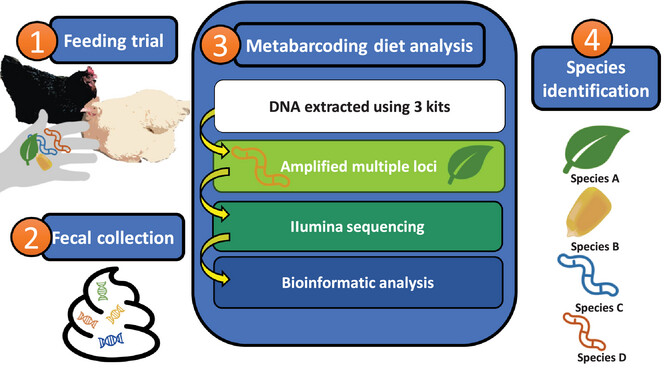
An optimized protocol can significantly affect the accuracy of DNA metabarcoding diet analysis. In this study, we conducted a feeding trial experiment by feeding known food items to chickens and collected their excreta for eight hours after feeding. The efficacy of DNA extraction kits and primer sets were assessed. The results indicated that extraction kits using bead-based homogenization positively affected the recovery proportion of fecal DNA. For insect DNA detection, two cytochrome oxidase subunit I (COI) primer sets significantly outperformed the third. For plant DNA detection, both recovery proportion and taxonomic resolution from amplifying internal transcribed spacer 2 (ITS2) were significantly higher than those from rbcL and trnL. These results display the potential variability that can be inherently present in DNA-based diet analyses and highlight the utility of experimental feeding trials in validating such approaches, particularly for omnivores with diverse diets.
Environmental conditions influence host–parasite interactions and host fitness in a migratory passerine
- First Published: 08 July 2024
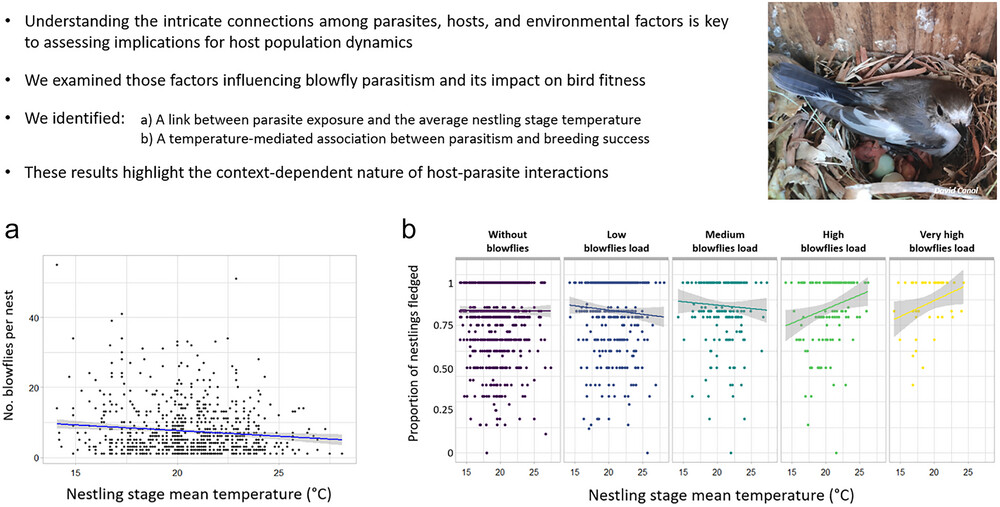
Understanding the intricate connections among parasites, hosts, and environmental factors is key to assessing implications for host population dynamics. We examined those factors influencing blowfly parasitism and its impact on bird fitness. We identified a link between parasite exposure and the average nestling stage temperature, and a temperature-mediated association between parasitism and breeding success. This highlights the context-dependent nature of host–parasite interactions.
Environmental factors and host sex influence the skin microbiota structure of Hong Kong newt (Paramesotriton hongkongensis) in a coldspot of chytridiomycosis in subtropical East Asia
- First Published: 13 June 2024
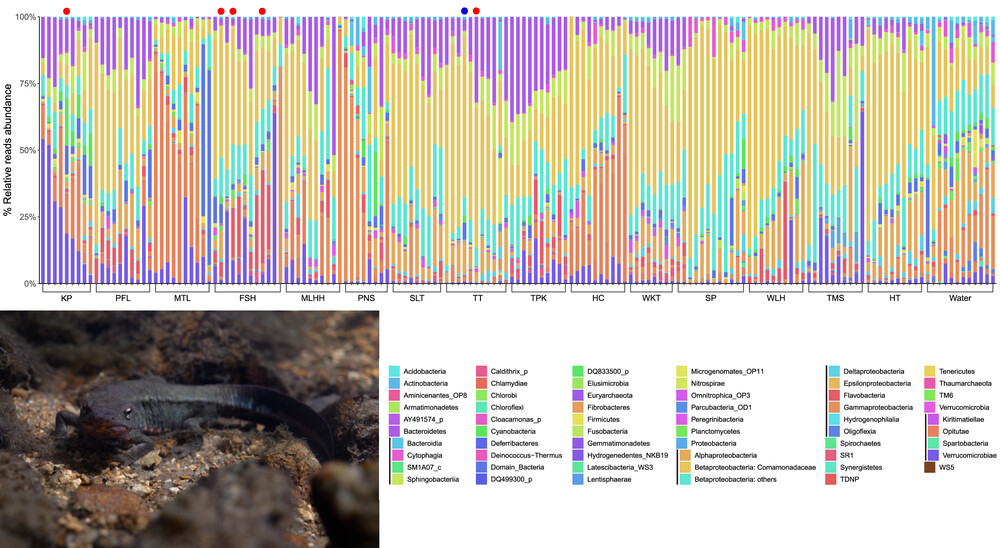
Asymptomatic chytrid fungal infection in the Hong Kong newts suggests their long-term coexistence with chytrids and a potential protective role of skin microbiota. The skin microbiota of Hong Kong newts has a high prevalence of taxa with putative anti-fungal properties. Moreover, site location, habitat elevation, and host sex exhibited significant effects on their skin microbiota compositions.
Microhabitat and adhesive toepads shape gecko limb morphology
- First Published: 31 July 2024
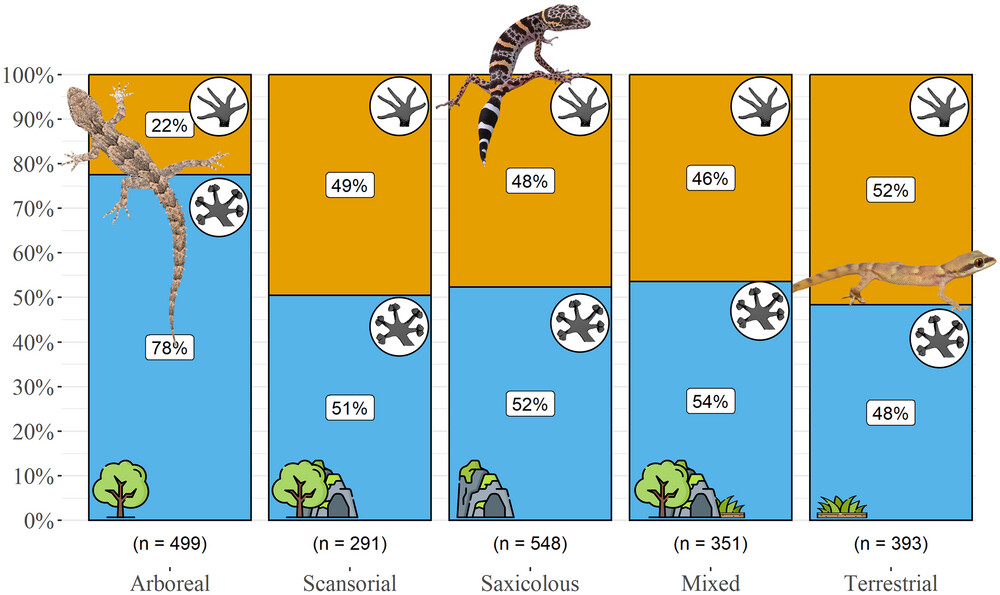
Microhabitat affects gecko limb morphology differently than expected in other lizards. Although adhesive toepads' state is phylogenetically conserved, they were acquired and lost multiple times in geckos, with an association of toepads with arboreality. Padless geckos generally have longer limbs and limb segments than pad-bearing species. Saxicolous geckos have the longest limbs and limb segments, while terrestrial geckos have more even hind- and forelimbs than arboreal geckos.
Alien range size, habitat breadth, origin location, and domestication of alien species matter to their impact risks
- First Published: 17 May 2024
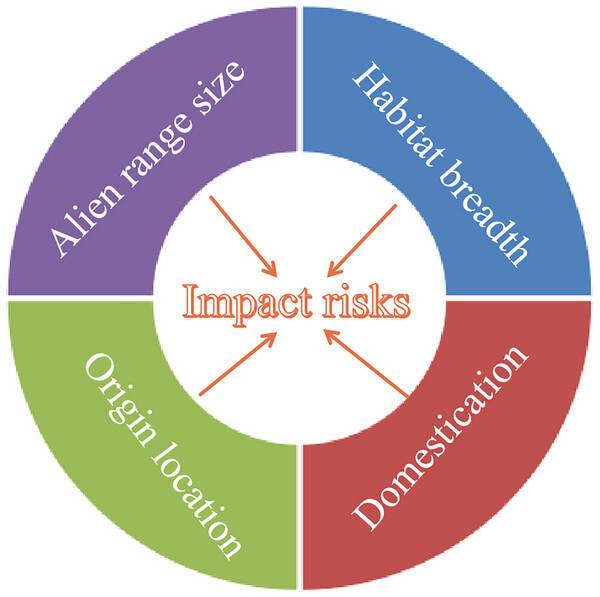
We collected information on 1071 established alien terrestrial vertebrate species (mammals, birds, reptiles, and amphibians) and created a comprehensive database of 108 alien species to assess their impact risks and examined the generality of relationships between the impact risks and species characteristics. Our results showed that alien range size, habitat breadth, origin location, and domestication were closely related to alien species' impact risks.
Bluer in the city: urban male lizards exhibit more intense sexual coloration and lower parasite loads than non-urban males
- First Published: 30 September 2024
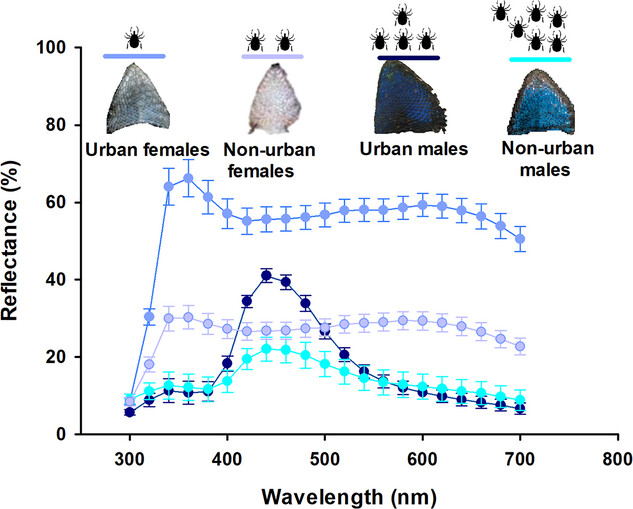
The urban environment may exert different selective pressures on sexually selected traits than more pristine environments. Our study shows that sexual coloration is more saturated (bluer) in male lizards from urban environments than in male non-urban lizards. The average parasite load is lower in urban lizards than in non-urban lizards. We found a negative relationship between hemoparasite count and sexual coloration in male lizards from non-urban environments than in urban environments.




